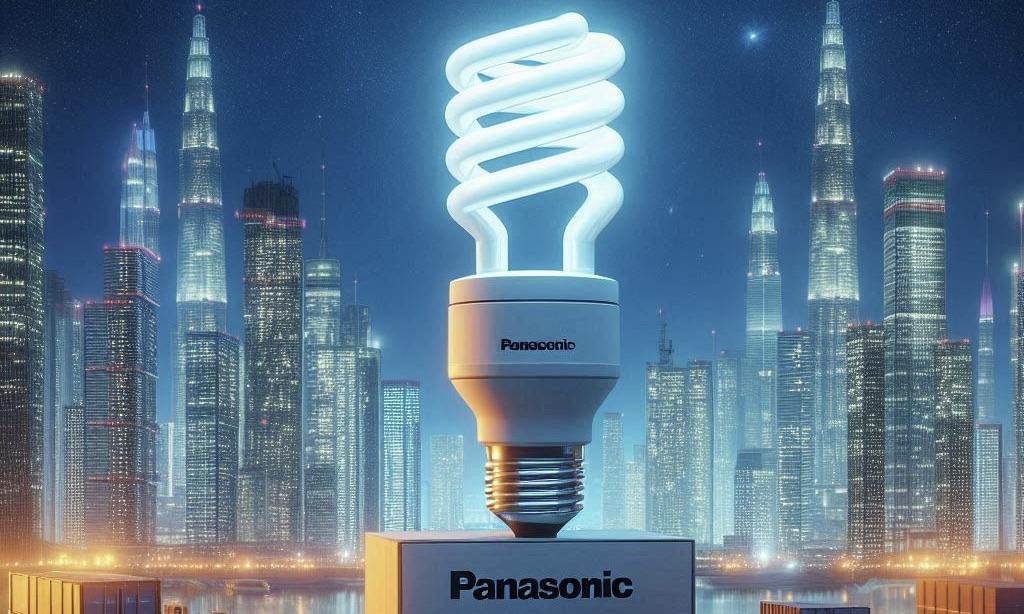Panasonic will cease production of fluorescent lamps by the end of 2027, ending a seven-decade legacy. The decision aligns with global efforts to phase out mercury-containing products, marking a significant shift in the lighting industry toward LED alternatives.
Panasonic to End 70-Year Fluorescent Lamp Production by 2027, Shifting Focus to LED Lighting
Panasonic, a key player in the lighting industry, will cease production of fluorescent lamps at the end of 2027, marking the end of a seven-decade-long history. According to Nikkei Asia, this significant decision is in response to a worldwide initiative to eliminate the product, underscoring the industry's changing landscape.
Panasonic, Toshiba Lighting & Technology, and Hotalux are the only three corporations in Japan producing fluorescent lighting, which commenced production in 1951.
Panasonic is the first to establish a specific conclusion date. Although the specifics have not yet been determined, the production of light-emitting diode (LED) lanterns is anticipated to increase.
The action is a response to an international agreement reached in November to prohibit the production, export, and import of common fluorescent lamp varieties by the end of 2027 due to their mercury content.
Lighting manufactured before the event date is still available for purchase in 2028 and subsequent years.
Panasonic, mindful of the ongoing demand, intends to continue producing fluorescent lamps until the deadline. This commitment ensures that the product will be available for those who still rely on it in Japan.
Japan's Transition to LED Lighting Faces Challenges Despite Potential to Halve Energy Consumption by 2030
According to the Japan Lighting Manufacturers Association (JLMA), LEDs comprised 60.3% of the country's extant lighting as of June. Fluorescents comprised the preponderance of the remaining 40%.
The Japanese government's ambitious plan to transition all current illumination in the nation to LEDs is expected to yield significant benefits by 2030. The JLMA estimated that this could reduce electricity consumption from lighting by half from 2013, a promising prospect for the industry and consumers.
However, obstacles persist. Fluorescent lamps are typically replaced after reaching the end of their lifespan, typically within two to four years. Renovations are frequently necessary to replace fixtures and other associated equipment to implement the transition.
Additionally, LEDs are generally more costly, which presents an additional challenge for small businesses and consumers experiencing inflation.



 What’s the difference between baking powder and baking soda? It’s subtle, but significant
What’s the difference between baking powder and baking soda? It’s subtle, but significant  Instacart Stock Drops After FTC Probes AI-Based Price Discrimination Claims
Instacart Stock Drops After FTC Probes AI-Based Price Discrimination Claims  How to support someone who is grieving: five research-backed strategies
How to support someone who is grieving: five research-backed strategies  Micron Technology Forecasts Surge in Revenue and Earnings on AI-Driven Memory Demand
Micron Technology Forecasts Surge in Revenue and Earnings on AI-Driven Memory Demand  Toyota to Sell U.S.-Made Camry, Highlander, and Tundra in Japan From 2026 to Ease Trade Tensions
Toyota to Sell U.S.-Made Camry, Highlander, and Tundra in Japan From 2026 to Ease Trade Tensions  Elliott Management Takes $1 Billion Stake in Lululemon, Pushes for Leadership Change
Elliott Management Takes $1 Billion Stake in Lululemon, Pushes for Leadership Change  Union-Aligned Investors Question Amazon, Walmart and Alphabet on Trump Immigration Policies
Union-Aligned Investors Question Amazon, Walmart and Alphabet on Trump Immigration Policies  Delta Air Lines President Glen Hauenstein to Retire, Leaving Legacy of Premium Strategy
Delta Air Lines President Glen Hauenstein to Retire, Leaving Legacy of Premium Strategy  Republicans Raise National Security Concerns Over Intel’s Testing of China-Linked Chipmaking Tools
Republicans Raise National Security Concerns Over Intel’s Testing of China-Linked Chipmaking Tools  Volaris and Viva Agree to Merge, Creating Mexico’s Largest Low-Cost Airline Group
Volaris and Viva Agree to Merge, Creating Mexico’s Largest Low-Cost Airline Group  Parents abused by their children often suffer in silence – specialist therapy is helping them find a voice
Parents abused by their children often suffer in silence – specialist therapy is helping them find a voice  Trello Outage Disrupts Users as Access Issues Hit Atlassian’s Work Management Platform
Trello Outage Disrupts Users as Access Issues Hit Atlassian’s Work Management Platform  Office design isn’t keeping up with post-COVID work styles - here’s what workers really want
Office design isn’t keeping up with post-COVID work styles - here’s what workers really want  Sanofi’s Efdoralprin Alfa Gains EMA Orphan Status for Rare Lung Disease
Sanofi’s Efdoralprin Alfa Gains EMA Orphan Status for Rare Lung Disease  Maersk Vessel Successfully Transits Red Sea After Nearly Two Years Amid Ongoing Security Concerns
Maersk Vessel Successfully Transits Red Sea After Nearly Two Years Amid Ongoing Security Concerns  Oracle Stock Slides After Blue Owl Exit Report, Company Says Michigan Data Center Talks Remain on Track
Oracle Stock Slides After Blue Owl Exit Report, Company Says Michigan Data Center Talks Remain on Track 































